Growing Fennel at Home can seem daunting, but trust me, it’s easier than you think! Imagine stepping outside your back door and snipping fresh, fragrant fennel fronds to add a burst of anise-like flavor to your salads, soups, or even grilled fish. Forget those sad, wilted bulbs at the grocery store – we’re talking about vibrant, homegrown goodness right at your fingertips.
Fennel has a rich history, dating back to ancient Roman times when it was believed to bestow longevity, courage, and even ward off evil spirits! While we can’t guarantee immortality, I can promise that growing fennel at home will bring a touch of magic to your garden and your kitchen.
In today’s busy world, we’re all looking for ways to connect with nature and enjoy fresh, healthy food. But who has time for complicated gardening projects? That’s where these simple DIY tricks and hacks come in. I’m going to share my secrets for successfully cultivating fennel, even if you have limited space or a less-than-green thumb. Get ready to unlock the delicious potential of this versatile herb and vegetable – let’s get growing!
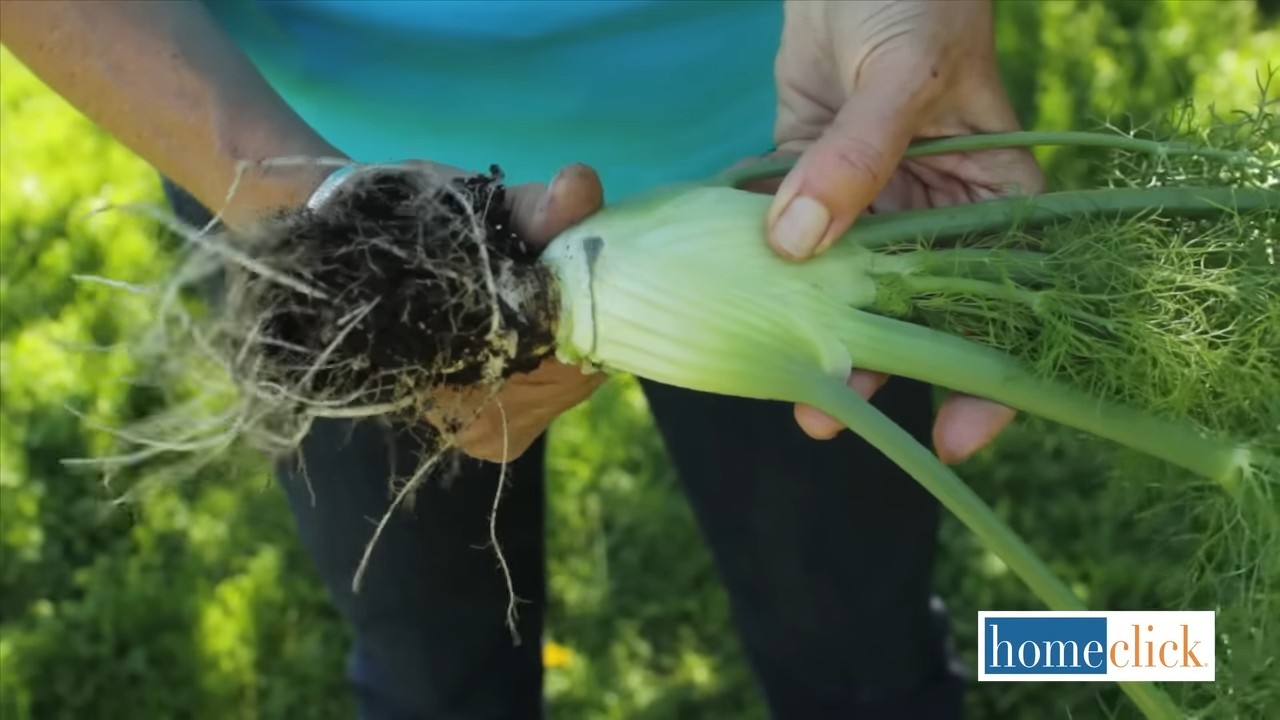
Growing Fennel at Home: A Beginner’s Guide
Hey there, fellow gardening enthusiasts! I’m so excited to share my experience with growing fennel at home. It’s surprisingly easy and rewarding, and nothing beats the fresh, anise-like flavor of homegrown fennel in your cooking. Whether you’re aiming for the bulb, the fronds, or the seeds, this guide will walk you through everything you need to know.
Choosing Your Fennel Variety
Before we dive in, let’s talk about fennel varieties. There are two main types: bulb fennel (also called Florence fennel) and herb fennel.
* **Bulb Fennel (Florence Fennel):** This is the one you’ll find in grocery stores with the swollen, bulbous base. It’s grown for its bulb, stalks, and fronds, all of which are edible. Popular varieties include ‘Zefa Fino’ and ‘Rondo’.
* **Herb Fennel:** This type is primarily grown for its feathery leaves and seeds. It doesn’t form a bulb. Bronze fennel is a beautiful ornamental variety with dark, coppery foliage.
For this guide, I’ll focus primarily on growing bulb fennel, but many of the principles apply to herb fennel as well.
Getting Started: Planting Fennel
Okay, let’s get our hands dirty! Here’s how to plant fennel:
1. **Timing is Key:** Fennel is a cool-season crop, meaning it thrives in cooler temperatures. For most regions, the best time to plant is in early spring (after the last frost) or late summer/early fall. Hot weather can cause fennel to bolt (go to seed prematurely), which can affect the bulb’s flavor and texture. I usually aim for planting in late March or early April for a summer harvest, and again in late August for a fall harvest.
2. **Choosing the Right Location:** Fennel needs plenty of sunlight – at least 6-8 hours per day. It also prefers well-drained soil. Avoid planting in areas where water tends to pool after rain.
3. **Preparing the Soil:** Before planting, amend your soil with compost or well-rotted manure. This will improve drainage, add nutrients, and create a healthy environment for your fennel to grow. I like to dig in about 2-3 inches of compost into the top 6-8 inches of soil.
4. **Starting from Seed (My Preferred Method):** While you can buy fennel seedlings, I prefer to start from seed. It’s more economical, and you have a wider variety of choices.
* **Indoor Starting (Optional):** You can start seeds indoors 4-6 weeks before the last frost. Sow seeds in seed trays or small pots filled with seed-starting mix. Keep the soil moist and provide plenty of light.
* **Direct Sowing:** Once the soil has warmed up, you can direct sow seeds into the garden. Sow seeds about ¼ inch deep and 1-2 inches apart. Gently water the soil.
5. **Transplanting Seedlings (If Starting Indoors):** If you started your seeds indoors, harden them off before transplanting them into the garden. This means gradually exposing them to outdoor conditions over a week or two. Once they’re hardened off, transplant them into the garden, spacing them about 6-12 inches apart.
6. **Watering After Planting:** Water the newly planted seeds or seedlings thoroughly. Keep the soil consistently moist, but not waterlogged, until they are established.
Caring for Your Fennel Plants
Now that your fennel is planted, here’s how to keep it happy and healthy:
1. **Watering:** Fennel needs consistent moisture, especially during hot, dry weather. Water deeply whenever the top inch of soil feels dry. Avoid overhead watering, as this can promote fungal diseases. I prefer to use a soaker hose or drip irrigation to water at the base of the plants.
2. **Weeding:** Keep the area around your fennel plants free of weeds. Weeds compete for nutrients and water, and they can also harbor pests and diseases. Hand-pull weeds regularly or use a hoe to cultivate the soil.
3. **Fertilizing:** Fennel is a moderate feeder. You can fertilize it every few weeks with a balanced organic fertilizer. I like to use fish emulsion or compost tea. Follow the instructions on the fertilizer package.
4. **Earthing Up (For Bulb Fennel):** This is a crucial step for growing nice, plump bulbs. As the bulb begins to swell, mound soil around its base. This process, called earthing up or blanching, protects the bulb from sunlight, which can cause it to turn green and become bitter. I usually start earthing up when the bulb is about the size of a golf ball, and I repeat the process every week or two until harvest.
5. **Pest and Disease Control:** Fennel is generally pest-resistant, but it can be susceptible to aphids, slugs, and snails.
* **Aphids:** These tiny insects suck sap from plants. You can control them with a strong spray of water, insecticidal soap, or neem oil.
* **Slugs and Snails:** These pests can damage the foliage and bulbs. You can control them with beer traps, copper tape, or by hand-picking them off the plants at night.
* **Fungal Diseases:** In humid conditions, fennel can be susceptible to fungal diseases like powdery mildew. To prevent these diseases, provide good air circulation, avoid overhead watering, and remove any infected leaves.
Harvesting Your Fennel
The moment we’ve all been waiting for! Here’s how to harvest your fennel:
1. **Harvesting the Bulb (For Bulb Fennel):** You can harvest the bulb when it reaches the desired size, usually about 2-3 inches in diameter. Gently loosen the soil around the bulb and pull it up. You can also use a knife to cut the bulb from the roots.
2. **Harvesting the Fronds:** You can harvest the fronds at any time. Simply snip off the amount you need with scissors or pruning shears. The fronds have the strongest flavor when they are young and tender.
3. **Harvesting the Seeds:** If you want to harvest the seeds, allow the flower heads to dry on the plant. Once the seeds are dry and brown, cut off the flower heads and place them in a paper bag. Shake the bag to release the seeds. You can then store the seeds in an airtight container.
4. **Succession Planting:** To ensure a continuous harvest of fennel, plant new seeds every few weeks. This is especially important if you live in a warm climate where fennel tends to bolt.
Troubleshooting Common Fennel Problems
Even with the best care, you might encounter some problems while growing fennel. Here are a few common issues and how to address them:
* **Bolting:** As mentioned earlier, bolting is when fennel goes to seed prematurely. This is usually caused by hot weather or stress. To prevent bolting, plant fennel in the cool season, provide consistent moisture, and avoid stressing the plants. If your fennel does bolt, you can still harvest the fronds and seeds, but the bulb may be bitter.
* **Bulb Splitting:** This can be caused by inconsistent watering or nutrient deficiencies. To prevent bulb splitting, provide consistent moisture and fertilize regularly.
* **Yellowing Leaves:** Yellowing leaves can be a sign of nutrient deficiencies, overwatering, or fungal diseases. Check the soil drainage, fertilize if necessary, and treat any fungal diseases.
Using Your Homegrown Fennel
Now for the fun part – using your homegrown fennel! Here are just a few ideas:
* **Bulb:** Slice the bulb thinly and add it to salads, soups, or stews. You can also roast or grill it.
* **Fronds:** Use the fronds as a garnish for salads, soups, or fish dishes. They can also be used to flavor sauces and dressings.
* **Seeds:** Use the seeds to flavor breads, sausages, or other dishes. They can also be used to make fennel tea.
I personally love to thinly slice the fennel bulb and toss it with olive oil, lemon juice, salt, and pepper for a simple and refreshing salad. I also use the fronds to garnish grilled fish or roasted vegetables. And the seeds? They’re fantastic in homemade bread!
Final Thoughts
Growing fennel at home is a rewarding experience that allows you to enjoy the fresh, unique flavor of this versatile herb. With a little bit of planning and care, you can have a bountiful harvest of fennel bulbs, fronds, and seeds. So, get out there and start planting! Happy gardening!
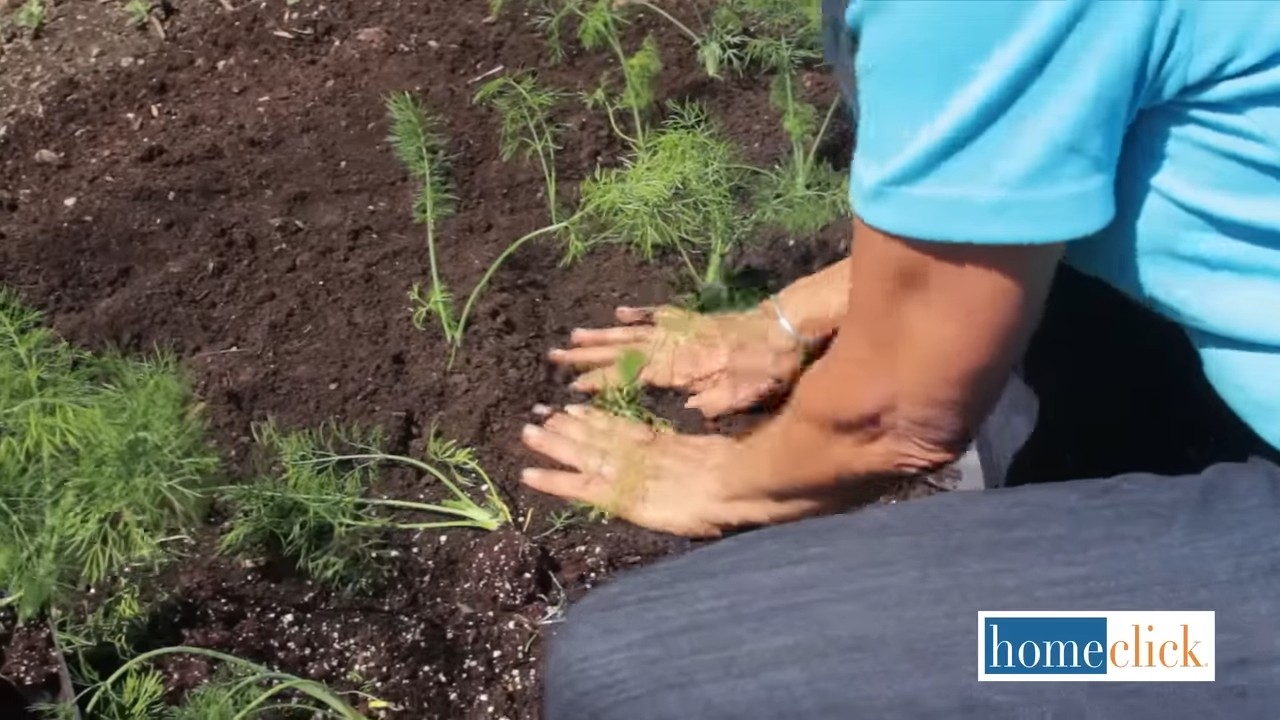
Conclusion
So, there you have it! Growing fennel at home is not only achievable, but it’s also a rewarding experience that brings fresh, aromatic flavors right to your fingertips. We’ve walked through the simple steps, from selecting the right variety to nurturing your plants and harvesting the bounty. But why is this DIY trick a must-try?
Firstly, the flavor of homegrown fennel is simply unparalleled. Store-bought fennel often lacks the vibrant anise notes and delicate sweetness that you’ll find in your own garden-fresh bulbs and fronds. Imagine adding freshly chopped fennel fronds to your salads, using the bulb in a creamy gratin, or even grilling it for a smoky, caramelized side dish. The possibilities are endless!
Secondly, growing your own fennel allows you to control the entire process, ensuring that your plants are free from harmful pesticides and herbicides. You can nurture them with organic fertilizers and create a thriving ecosystem in your garden. This is especially important if you’re conscious about the quality of your food and want to minimize your exposure to chemicals.
Thirdly, fennel is a beautiful and versatile plant that adds visual interest to your garden. Its feathery foliage and tall stalks create a stunning backdrop for other plants, and its yellow flowers attract beneficial insects like ladybugs and hoverflies. Growing fennel is not just about the food; it’s about creating a healthy and vibrant garden ecosystem.
Variations and Suggestions:
Don’t be afraid to experiment with different varieties of fennel. ‘Florence’ fennel is a popular choice for its large, bulbous base, but you can also try ‘Purpureum’ fennel for its striking bronze foliage or ‘Sweet’ fennel for its milder flavor.
Consider companion planting fennel with other herbs and vegetables. It pairs well with dill, chamomile, and carrots, and it can help to deter pests like aphids and slugs. However, avoid planting it near tomatoes, beans, or kohlrabi, as it can inhibit their growth.
If you’re short on space, you can even grow fennel in containers. Choose a large pot with good drainage and use a high-quality potting mix. Be sure to water your container-grown fennel regularly and fertilize it every few weeks.
For an extra burst of flavor, try roasting fennel seeds to bring out their nutty, aromatic notes. You can use them to season roasted vegetables, soups, and stews, or even grind them into a spice blend.
A Final Encouragement:
Growing fennel at home is a simple and satisfying way to add fresh, flavorful ingredients to your meals and create a beautiful and healthy garden. So, what are you waiting for? Grab some seeds or seedlings, find a sunny spot in your garden, and get started today! We encourage you to try this DIY trick and share your experiences with us. Let us know what varieties you’ve grown, what dishes you’ve created, and any tips or tricks you’ve discovered along the way. Happy gardening!
Frequently Asked Questions (FAQ)
What is the best time of year to plant fennel?
The best time to plant fennel depends on your climate. In cooler climates, you can start seeds indoors 6-8 weeks before the last frost and transplant them outdoors after the danger of frost has passed. In warmer climates, you can direct sow seeds in the spring or fall. Avoid planting fennel during the hottest months of summer, as it can bolt (go to seed) prematurely.
How much sunlight does fennel need?
Fennel needs at least 6 hours of sunlight per day to thrive. Choose a sunny spot in your garden that receives plenty of direct sunlight. If you’re growing fennel in containers, make sure to place them in a sunny location.
What kind of soil is best for fennel?
Fennel prefers well-drained soil that is rich in organic matter. Amend your soil with compost or other organic materials before planting to improve its fertility and drainage. A slightly acidic to neutral soil pH (6.0-7.0) is ideal.
How often should I water fennel?
Water fennel regularly, especially during dry periods. Keep the soil consistently moist, but avoid overwatering, as this can lead to root rot. Water deeply whenever the top inch of soil feels dry to the touch.
How do I harvest fennel?
You can harvest fennel bulbs when they reach about 2-3 inches in diameter. Use a sharp knife to cut the bulb at the base of the plant. You can also harvest the fronds and seeds as needed. The fronds can be snipped off with scissors, and the seeds can be harvested when they turn brown and dry.
How do I prevent fennel from bolting?
Bolting is when a plant prematurely goes to seed, often due to stress from heat or lack of water. To prevent fennel from bolting, water it regularly, especially during hot weather. You can also mulch around the plants to help retain moisture in the soil. Choose bolt-resistant varieties if you live in a hot climate.
Is fennel a perennial or an annual?
Fennel is technically a short-lived perennial, but it is often grown as an annual, especially in colder climates. In warmer climates, it may survive for several years, but its bulb production will decline after the first year.
Can I eat the entire fennel plant?
Yes, you can eat the entire fennel plant! The bulb, stalks, fronds, and seeds are all edible. The bulb is often used in salads, gratins, and soups. The stalks can be used like celery. The fronds can be used as a garnish or added to salads and sauces. The seeds can be used as a spice.
How do I store fennel?
Store fennel bulbs in the refrigerator for up to a week. Wrap them in a damp paper towel and place them in a plastic bag. Fennel fronds can be stored in the refrigerator for a few days. Place them in a glass of water like you would flowers. Fennel seeds should be stored in an airtight container in a cool, dark place.
What are some common pests and diseases that affect fennel?
Fennel is generally a pest-resistant plant, but it can be susceptible to aphids, slugs, and snails. You can control these pests by handpicking them off the plants or using organic pest control methods. Fennel can also be affected by fungal diseases like powdery mildew. To prevent these diseases, provide good air circulation around the plants and avoid overwatering.
Can I grow fennel indoors?
While it’s possible to start fennel seeds indoors, it’s not ideal to grow it to full maturity indoors. Fennel needs a lot of sunlight and space to thrive, which can be difficult to provide indoors. If you want to grow fennel indoors, choose a sunny location and use a large pot. You may need to supplement with artificial light.
Is fennel good for my health?
Yes, fennel is a healthy vegetable that is rich in vitamins, minerals, and antioxidants. It is a good source of vitamin C, potassium, and fiber. Fennel has also been shown to have anti-inflammatory and digestive benefits.
What are some creative ways to use fennel in cooking?
Fennel is a versatile ingredient that can be used in a variety of dishes. Try grilling fennel bulbs for a smoky side dish, adding fennel fronds to salads for a fresh anise flavor, or using fennel seeds to season roasted vegetables or soups. You can also use fennel to make a delicious fennel and orange salad or a creamy fennel gratin.
How do I save fennel seeds for next year?
So, there you have it! Growing fennel at home is not only achievable, but it’s also a rewarding experience that brings fresh, aromatic flavors right to your fingertips. We’ve walked through the simple steps, from selecting the right variety to nurturing your plants and harvesting the bounty. But why is this DIY trick a must-try?
Firstly, the flavor of homegrown fennel is simply unparalleled. Store-bought fennel often lacks the vibrant anise notes and delicate sweetness that you’ll find in your own garden-fresh bulbs and fronds. Imagine adding freshly chopped fennel fronds to your salads, using the bulb in a creamy gratin, or even grilling it for a smoky, caramelized side dish. The possibilities are endless!
Secondly, growing your own fennel allows you to control the entire process, ensuring that your plants are free from harmful pesticides and herbicides. You can nurture them with organic fertilizers and create a thriving ecosystem in your garden. This is especially important if you’re conscious about the quality of your food and want to minimize your exposure to chemicals.
Thirdly, fennel is a beautiful and versatile plant that adds visual interest to your garden. Its feathery foliage and tall stalks create a stunning backdrop for other plants, and its yellow flowers attract beneficial insects like ladybugs and hoverflies. Growing fennel is not just about the food; it’s about creating a healthy and vibrant garden ecosystem.
Variations and Suggestions:
Don’t be afraid to experiment with different varieties of fennel. ‘Florence’ fennel is a popular choice for its large, bulbous base, but you can also try ‘Purpureum’ fennel for its striking bronze foliage or ‘Sweet’ fennel for its milder flavor.
Consider companion planting fennel with other herbs and vegetables. It pairs well with dill, chamomile, and carrots, and it can help to deter pests like aphids and slugs. However, avoid planting it near tomatoes, beans, or kohlrabi, as it can inhibit their growth.
If you’re short on space, you can even grow fennel in containers. Choose a large pot with good drainage and use a high-quality potting mix. Be sure to water your container-grown fennel regularly and fertilize it every few weeks.
For an extra burst of flavor, try roasting fennel seeds to bring out their nutty, aromatic notes. You can use them to season roasted vegetables, soups, and stews, or even grind them into a spice blend.
A Final Encouragement:
Growing fennel at home is a simple and satisfying way to add fresh, flavorful ingredients to your meals and create a beautiful and healthy garden. So, what are you waiting for? Grab some seeds or seedlings, find a sunny spot in your garden, and get started today! We encourage you to try this DIY trick and share your experiences with us. Let us know what varieties you’ve grown, what dishes you’ve created, and any tips or tricks you’ve discovered along the way. Happy gardening!
Frequently Asked Questions (FAQ)
What is the best time of year to plant fennel?
The best time to plant fennel depends on your climate. In cooler climates, you can start seeds indoors 6-8 weeks before the last frost and transplant them outdoors after the danger of frost has passed. In warmer climates, you can direct sow seeds in the spring or fall. Avoid planting fennel during the hottest months of summer, as it can bolt (go to seed) prematurely.
How much sunlight does fennel need?
Fennel needs at least 6 hours of sunlight per day to thrive. Choose a sunny spot in your garden that receives plenty of direct sunlight. If you’re growing fennel in containers, make sure to place them in a sunny location.
What kind of soil is best for fennel?
Fennel prefers well-drained soil that is rich in organic matter. Amend your soil with compost or other organic materials before planting to improve its fertility and drainage. A slightly acidic to neutral soil pH (6.0-7.0) is ideal.
How often should I water fennel?
Water fennel regularly, especially during dry periods. Keep the soil consistently moist, but avoid overwatering, as this can lead to root rot. Water deeply whenever the top inch of soil feels dry to the touch.
How do I harvest fennel?
You can harvest fennel bulbs when they reach about 2-3 inches in diameter. Use a sharp knife to cut the bulb at the base of the plant. You can also harvest the fronds and seeds as needed. The fronds can be snipped off with scissors, and the seeds can be harvested when they turn brown and dry.
How do I prevent fennel from bolting?
Bolting is when a plant prematurely goes to seed, often due to stress from heat or lack of water. To prevent fennel from bolting, water it regularly, especially during hot weather. You can also mulch around the plants to help retain moisture in the soil. Choose bolt-resistant varieties if you live in a hot climate.
Is fennel a perennial or an annual?
Fennel is technically a short-lived perennial, but it is often grown as an annual, especially in colder climates. In warmer climates, it may survive for several years, but its bulb production will decline after the first year.
Can I eat the entire fennel plant?
Yes, you can eat the entire fennel plant! The bulb, stalks, fronds, and seeds are all edible. The bulb is often used in salads, gratins, and soups. The stalks can be used like celery. The fronds can be used as a garnish or added to salads and sauces. The seeds can be used as a spice.
How do I store fennel?
Store fennel bulbs in the refrigerator for up to a week. Wrap them in a damp paper towel and place them in a plastic bag. Fennel fronds can be stored in the refrigerator for a few days. Place them in a glass of water like you would flowers. Fennel seeds should be stored in an airtight container in a cool, dark place.
What are some common pests and diseases that affect fennel?
Fennel is generally a pest-resistant plant, but it can be susceptible to aphids, slugs, and snails. You can control these pests by handpicking them off the plants or using organic pest control methods. Fennel can also be affected by fungal diseases like powdery mildew. To prevent these diseases, provide good air circulation around the plants and avoid overwatering.
Can I grow fennel indoors?
While it’s possible to start fennel seeds indoors, it’s not ideal to grow it to full maturity indoors. Fennel needs a lot of sunlight and space to thrive, which can be difficult to provide indoors. If you want to grow fennel indoors, choose a sunny location and use a large pot. You may need to supplement with artificial light.
Is fennel good for my health?
Yes, fennel is a healthy vegetable that is rich in vitamins, minerals, and antioxidants. It is a good source of vitamin C, potassium, and fiber. Fennel has also been shown to have anti-inflammatory and digestive benefits.
What are some creative ways to use fennel in cooking?
Fennel is a versatile ingredient that can be used in a variety of dishes. Try grilling fennel bulbs for a smoky side dish, adding fennel fronds to salads for a fresh anise flavor, or using fennel seeds to season roasted vegetables or soups. You can also use fennel to make a delicious fennel and orange salad or a creamy fennel gratin.
How do I save fennel seeds for next year?
To save fennel seeds, allow the seed heads to dry completely on the plant. Once they are dry, cut them off and place them in a paper bag. Shake the bag to release the seeds. Remove any debris and store the seeds in an airtight container in a cool, dark place.

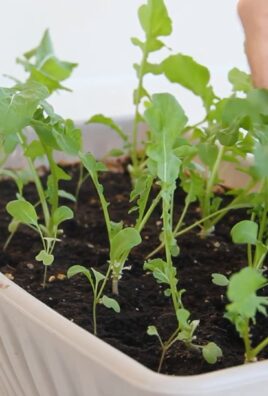
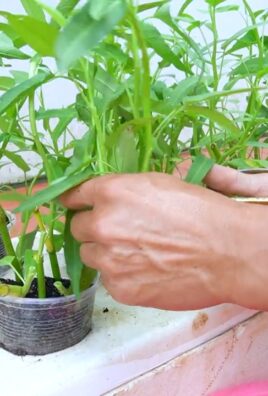
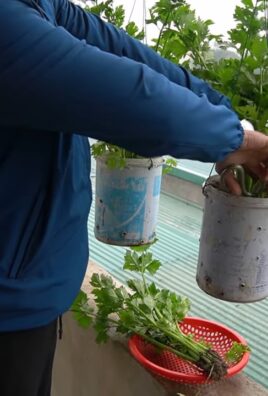
Leave a Comment